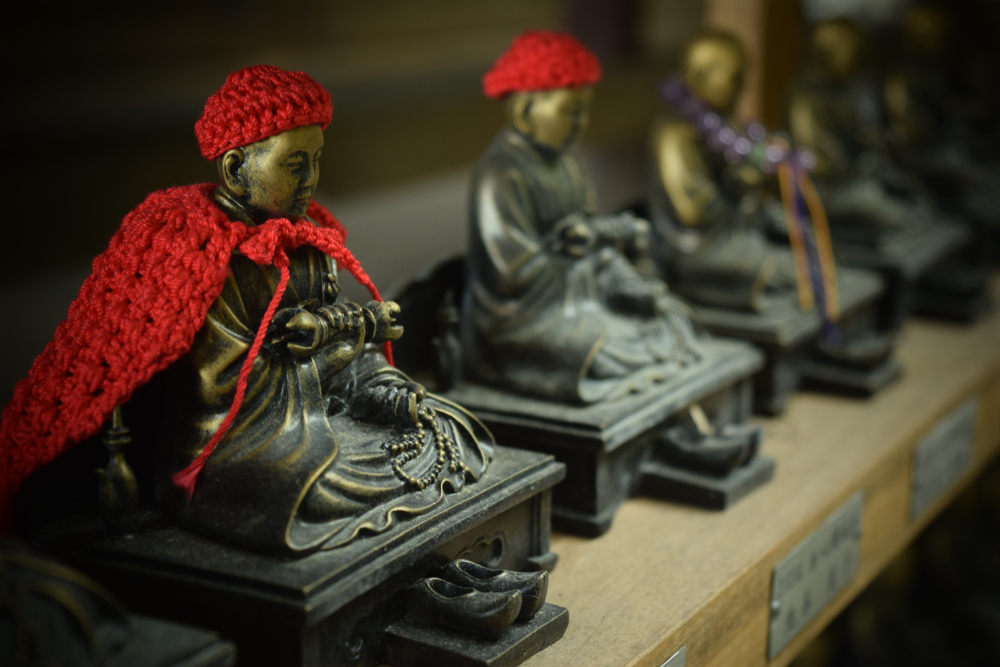
Japan is home to almost 127 million people and two major Asian religions, Buddhism and Shinto. Many Japanese people do not define their identities with religious labels, but around 80% of the population practices some form of Shinto. As one of Japan’s indigenous and oldest spiritual traditions, Shinto encompasses a wide range of customs and ideals. From home rituals and shrine worship to social mores and attitudes, these beliefs are an integral part of mainstream Japanese culture.
Shrine, Sect, and Folk Shinto
In Japan, Shinto goes by many different names. Shinto is derived from the Chinese term “shen tao,” which means “way of the gods.” It’s also called “kami no michi,” translated as “the way of the kami,” and “kannagara no michi,” meaning “according to the will of the kami.”
Shinto practices fall into three broad categories: shrine, sect, and folk. The Encyclopedia Britannica explains that Shrine Shinto takes place in public places of worship, also known as “jinja.” Sect Shinto includes thirteen recognized denominations, each of which has unique doctrines and practices. Folk Shinto includes personal spiritual practices, veneration at roadside shrines, and traditions observed in local communities and villages.
Core Principles of Shinto
Shinto beliefs are diverse, but its fundamental principles are a core part of Japanese culture: purity, harmony, family respect, and collectivist-based altruism. The Ancient History Encyclopedia expounds on these principles:
- Purity includes both physical and spiritual cleanliness.
- Maintaining physical well-being is a priority.
- Harmony exists in everything, and its balance must be carefully preserved.
- Revering nature and kami is important.
- All things possess the potential for both good and evil.
- Fertility and procreation are vital to nature and existence.
- Solidarity with and loyalty to one’s family is essential.
- Souls of deceased people can affect the living before joining with their ancestors.
Many of these values, especially family solidarity and collectivism, are heavily ingrained into Japanese society. Even Buddhist, Christian, and non-religious people feel these cultural impacts in their daily lives. However, other religions influenced Shinto during Japan’s early history. Family loyalty and altruism are two of Confucius’s five virtues. Taoism stresses harmony and balance while proposing that good and evil coexist in everyone and everything.
Who Are the Kami?
BBC Religions mentions the word “kami” doesn’t easily translate into English. As both a singular and plural noun, it’s sometimes rendered as “spirits” or “deities,” but this can also be natural forces or landscape elements. Some kami have personalized appellations. One example is Amaterasu Omikami, a sun kami whose name means “the great divinity illuminating heaven.” Other kami share their names with the places they inhabit. Millions of these entities exist, but they fall into three primary categories:
- Ujigami, the ancestors of one’s clan
- Kami of natural objects, forces, and organisms
- Souls of honored dead, such as heroes or outstanding achievers
Kami are not gods, so they’re not divine, omnipotent, or perfect. Shinto practitioners may think of them as higher manifestations of life energy, possessing a life-giving and harmonizing power known as “musubi.” Kami also have a truthful will called “makoto,” which can be translated as “sincerity.”
Many Shinto practices focus on honoring kami, but the goal is often more than just simple worship. Religion Facts mentions that many ceremonies focus on appealing to kami for protection and benevolence. These customs include offerings, prayers, purification, and the avoidance of unclean and taboo things. On the other hand, not all kami are good. Some rituals focus on appeasing evil kami, hoping to prevent illness or disaster.
Harmony, Reverence, and Coexistence
Ancient Japanese spirituality included animism, ancestor worship, and communication with the spirit world via shamans. Modern Shinto incorporates many of these beliefs, especially honoring nature and the kami within it. Respect for other beings, maintaining a harmonious existence, and collectivist-based altruism are all key philosophies that have transcended religion and formed Japan’s cultural foundation.

